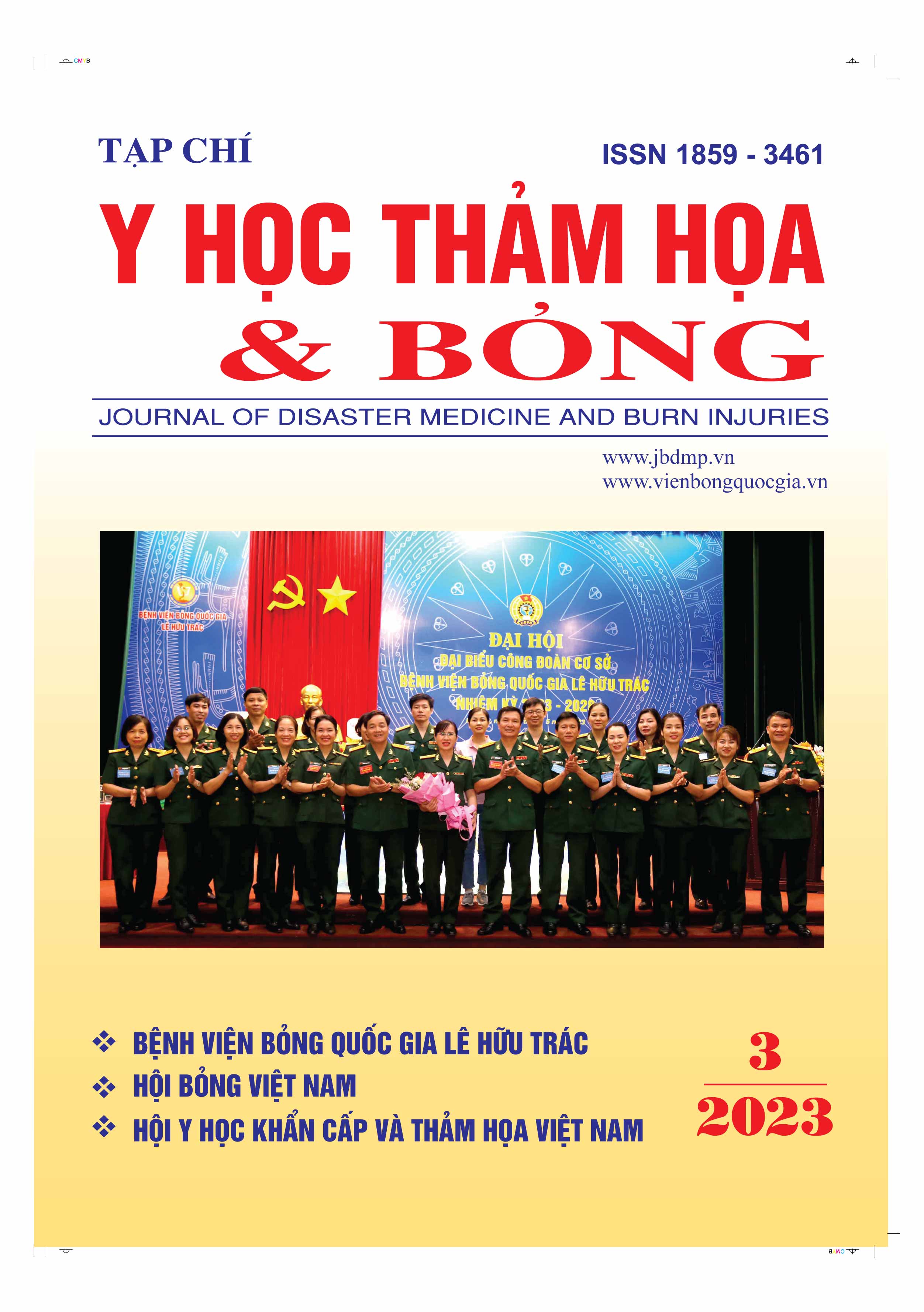Survey on the current status of knowledge and practice of nurses on patient safety in post-surgery care of the head, face and neck at the National Burn Hospital
Main Article Content
Abstract
Patient safety is a matter of concern in all post-operative care procedures. The Center for Plastic and Reconstructive Surgery conducted a study to determine the general picture of nurses' knowledge and practice on internal safety in postoperative care.
A cross-sectional study was carried out on all nurses at the Center from May 2022 to May 2023, with the results: 77.3% of nurses had satisfactory knowledge of internal safety in postoperative care, bridge. Which, the percentage of nurses with the highest knowledge score in infection control accounted for 83.5% with an average score of 20.2 ± 4.04. 89.2% of nurses have the right attitude about internal safety in postoperative care. Nurses with the right attitude about ensuring internal safety in care and use of medical equipment and supplies reached 75%. The percentage of nurses with a satisfactory attitude about accurately identifying patients and improving information in postoperative care was the lowest (52.3%).
Article Details
Keywords
Patient safety, postoperative care, microsurgery of chin and neck
References
2. Olivier Guillod (2013). Medical error disclosure and patient safety: Legal aspects, Journal of public health research, 2(31), 182-185.
3. Bộ Y tế (2014). Tài liệu đào tạo liên tục an toàn người bệnh, Nhà xuất bản Y học, Hà Nội.
4. Nguyễn Hữu Dự (2016). Nhận thức của điều dưỡng, kỹ thuật viên Bệnh viện Bỏng quốc gia về sự cố y khoa và tính khả thi của việc áp dụng mẫu báo cáo sự cố y khoa vào hồ sơ bệnh án, Luận văn Thạc sỹ Quản lý bệnh viện, Trường Đại học Y Hà Nội.
5. Alan Milburn (2000). An Organisation with a Memory: Report of an Expert Group on Learning from Adverse Events in the National Health Service, Department of Health Chief Medical Officer of Health.
6. Thomas G Weiser (2008). An estimation of the global volume of surgery: A modeling strategy based on available data, The Lancet, 9633(327), 139-144.
7. WHO (2011). Patient Safety Curriculum Guide, Multi-professional Edition.
8. Levinson DR. Washington (2010). Adverse Event in Hospitals: National Incidents among Medicare beneficiaries, Office of Inspector General, Department of Health and Human Services.
9. Nobile CG, Montuori P et al (2002). Healthcare personnel and hand decontamination in intensive care units: knowledge, attitudes, and behavior in Italy, Journal of hospital infection, 51(3), 226 -232.
10. Z Agharahimi, M Mostofi et al (2012). Evaluation of staff attitudes about patients' safety culture in Noor & Ali Asghar hospitals in Isfahan-2011, Journal of a Hospital, 11(3), 17-26.
11. Nguyễn Thị Hồng Lâm (2015). Kiến thức, thực hành về an toàn người bệnh của điều dưỡng lâm sàng Bệnh viện Đa khoa Saint Paul năm 2015 và một số yếu tố liên quan, Luận văn Thạc sỹ Y tế công cộng, Trường Đại học Y tế công cộng.
12. Thân Thị Thu Ba, Nguyễn Thị Mỹ Hạnh (2012). Đánh giá kiến thức, thực hành và thực hành quy trình điều dưỡng tại BVCC Trưng Vương, tại trang web http://www.bvtrungvuong.vn/Default.aspx?tabid=73&ctl=ViewNewsDetail&mid=402&NewsPK=12, xem 17/5/2017.
13. McFadden EA, Miller MA (1994). Clinical nurse specialist practice: Facilitators and barriers, Clinical Nurse Specialist, 8(1), 27-33.
14. Tuduetso Ramokate, Debashis Basu (2009). Health care waste management at an academic hospital: knowledge and practices of doctors and nurses, South African Medical Journal, 99(6), 67-72.
15. Amanda J. Ullman, Debbie A. Long, Claire M. Rickard (2014). Prevention of central venous catheter infections: a survey of pediatric ICU nurses' knowledge and practice, Nurse Education Today, 34(2), 202-207.


